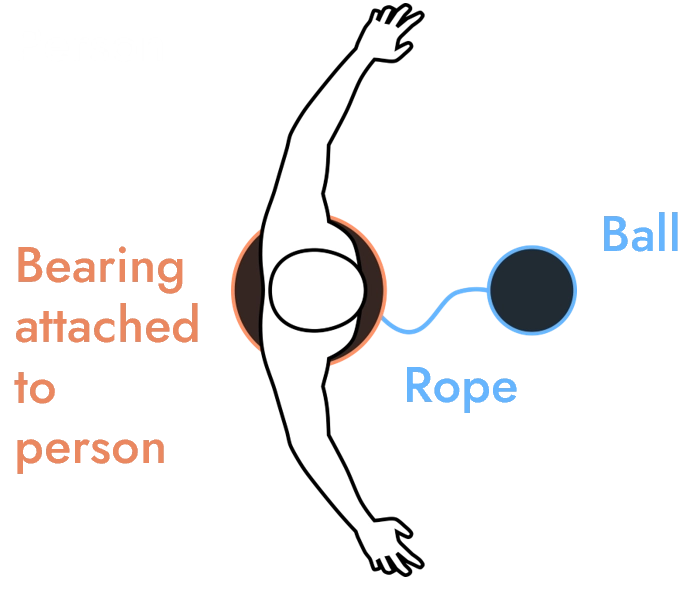Demonstration
Too complex. Give me an example.
Demonstration of creating linear momentum with force redirection

Normal (straight) Situation


Person pushes the ball and the ball pushes the person, making both move. When the rope is taught, both pull each other to complete stop again, because of equal action/reaction.

Asymmetrical Situation



If the weight is attached to a free spinning bearing and thrown off-center of mass, the weight will go straight, but the thrower starts spinning. When the rope is taught, the ball still has linear momentum, but the person has angular momentum instead.
As the ball drags the bearing in one direction, but the bearing doesn't provide a way for the person to slow down spinning, this force is never compensated for - leading to the person and the weight resembling Jupiter pulling on the Sun during its orbit, rather than bringing both the weight and the person to a stop as in the symmetrical example.